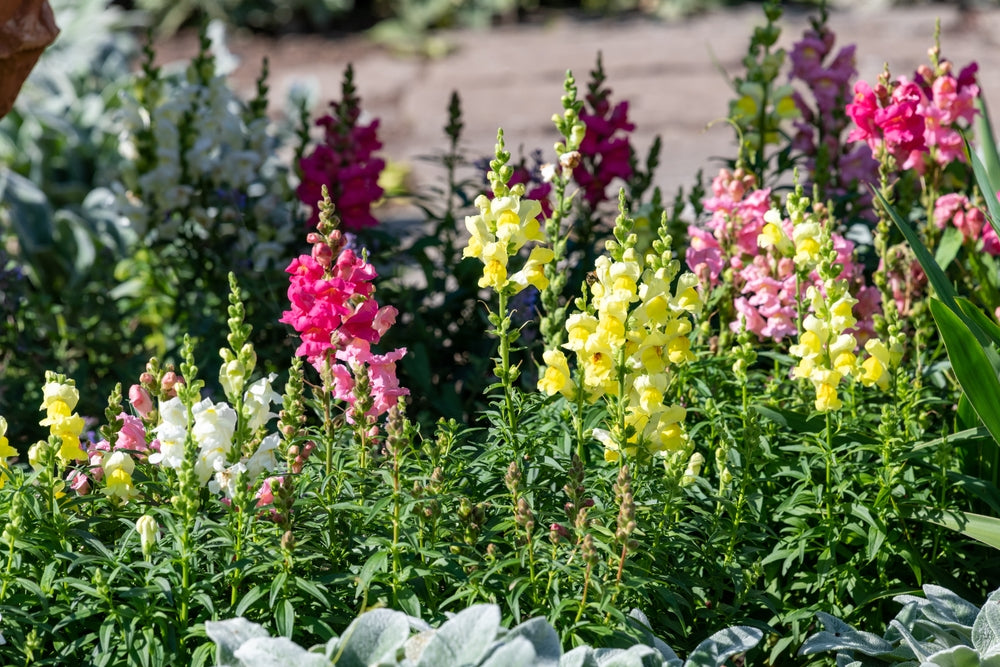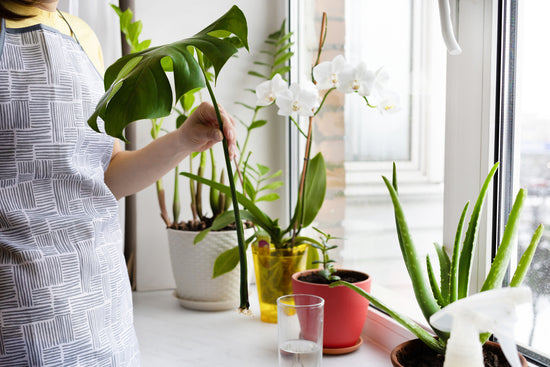Antirrhinum majus, commonly known as Snapdragon plants or Dragon Flowers, are captivating botanical wonders that add bursts of color and charm to gardens worldwide. With roots tracing back to the Mediterranean regions, these enchanting blooms have become popular for more than just their aesthetic appeal.
• Origins and Etymology of Snapdragons

The name "Antirrhinum" originates from the Greek words "anti," meaning like, and "rhin," meaning nose. This alludes to the snapdragon's unique floral structure, resembling a dragon's face that opens and closes when squeezed, resembling a dragon's mouth. The term "majus" is Latin for larger, highlighting the grandeur of these blossoms.
• Significance and Symbolism of the Antirrhinum Majus
Snapdragon plants, or Antirrhinum majus, boast rich significance and symbolism across cultures. In the Victorian language of flowers, they represent strength and grace, with their unique dragon-like appearance earning them a name derived from Greek words meaning "like a nose."
Beyond aesthetics, Snapdragons flowers are associated with protection, believed to ward off evil spirits and guard homes. Their resilience and ability to thrive in diverse conditions make them symbols of courage, often chosen to express admiration and gratitude.
In spiritual practices, snapdragons find a place in rituals, adding a layer of meaning to their stunning beauty. The Dragon Flowers, with their vibrant hues and multi-faceted symbolism, continue to be cherished for more than their visual appeal, embodying feelings of strength, protection, and admiration.
• Snapdragon Plant Benefits
1. Pollinators Love Snapdragons

Snapdragons produce nectar-rich flowers that attract pollinators such as bees and butterflies. By supporting these vital insects, Snapdragons contribute to the overall health of garden ecosystems and promote biodiversity.
2. Versatility in Gardens
Snapdragons are known for their adaptability and can thrive in various climates and soil conditions. This versatility makes them a popular choice for gardens, whether in borders, containers, or mixed flower beds.
3. Long-Lasting Blooms
These plants are prolific bloomers, providing a continuous display of flowers throughout the growing season. Regular deadheading, or removal of spent flowers, encourages new blooms, extending the visual appeal of the plant.
4. Dragon Flowers in Bouquets
Dragon flowers are often used in cut flower arrangements and bouquets due to their vibrant colors and unique shapes. They add a touch of elegance to floral designs and can be enjoyed indoors as well.
5. Easy Propagation from Snapdragon Seeds
Snapdragon seeds are readily available, making it convenient for gardeners to propagate new plants. This accessibility allows enthusiasts to grow snapdragons from seeds, expanding their gardens with these beautiful blooms.
6. Companion Planting

Snapdragons are known for their pest-resistant properties, making them suitable companions for other plants in the garden. They can help deter certain pests, providing a natural form of pest control.
7. Drought Tolerance
While they prefer consistently moist soil, Snapdragon plants exhibit some level of drought tolerance once established. This quality makes them resilient in periods of water scarcity or in gardens with varying watering schedules.
• Care Tips for Antirrhinum Majus: Growing Snapdragons from Seeds
1. Seed Selection

Choose high-quality snapdragon seeds. Varieties are available in a range of colors and sizes, so you can select seeds that suit your garden preferences.
2. Starting with the Seeds Indoors
Start with your Snapdragon seeds indoors 8-10 weeks before the last expected cold period. Use a well-draining seed-starting mix and sow seeds on the surface. Press them lightly into the soil and mist with water.
3. Germination
Keep the seeds consistently moist and maintain a temperature of around 70°F (21°C). Snapdragons plants typically germinate in 10-14 days.
4. Transplanting
Once seedlings have a couple of true leaves, you can transplant them into individual pots. Allow them to grow indoors until they are 4-6 inches tall.
5. Outdoor Planting
Transplant seedlings outdoors after the last frost when the soil has warmed up again. Remember to choose a sunny location with well-draining soil.
6. Spacing and Soil
Space plants 6-12 inches apart, depending on the variety. Snapdragons plants prefer slightly acidic to neutral soil with good drainage.

7. Care
Water regularly, keeping the soil consistently moist. Deadhead spent flowers to encourage continuous blooming. Fertilize with a balanced, all-purpose fertilizer every 4-6 weeks.










